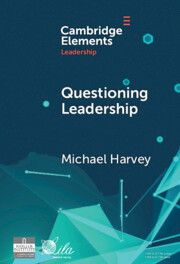Element contents
Questioning Leadership
Published online by Cambridge University Press: 17 June 2024
Summary
- Type
- Element
- Information
- Series: Elements in LeadershipOnline ISBN: 9781009484299Publisher: Cambridge University PressPrint publication: 20 June 2024
Bibliography
- 3
- Cited by

